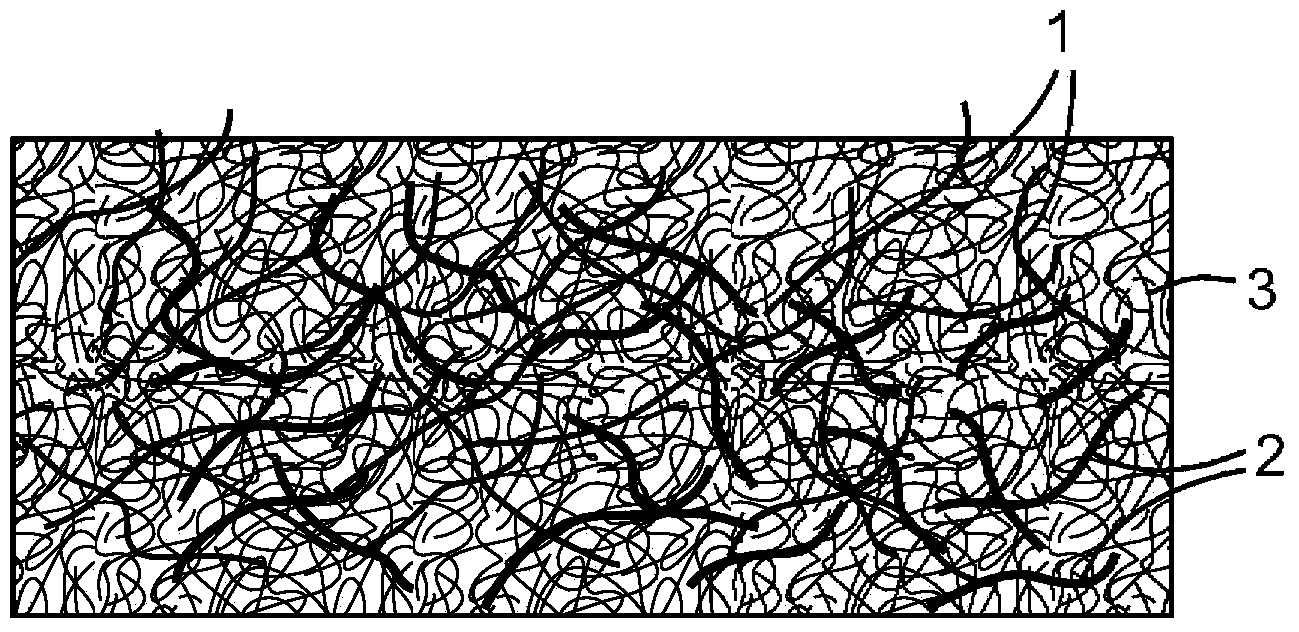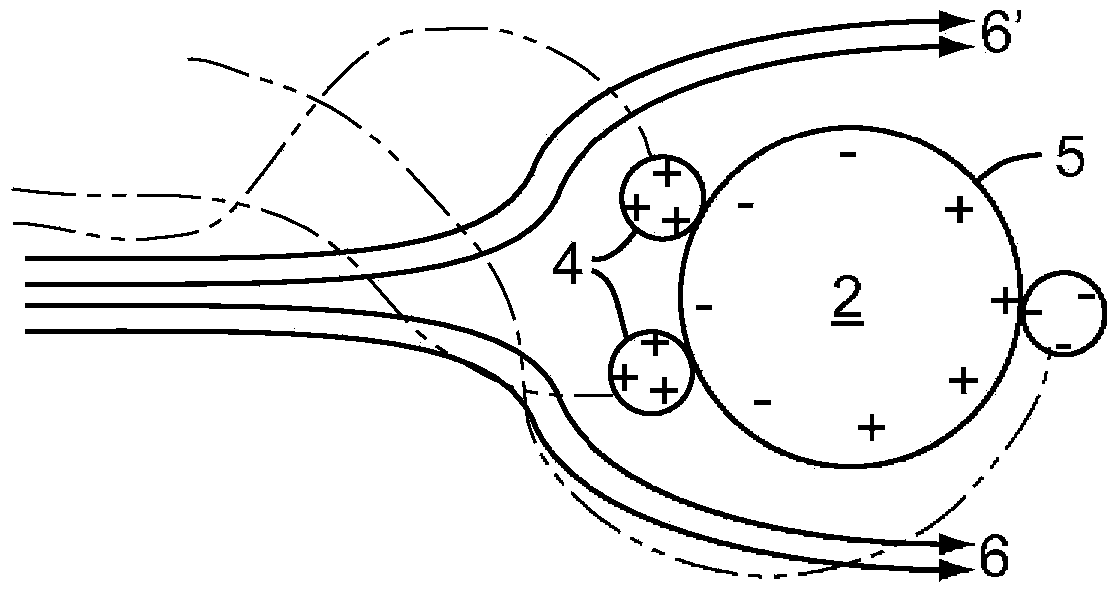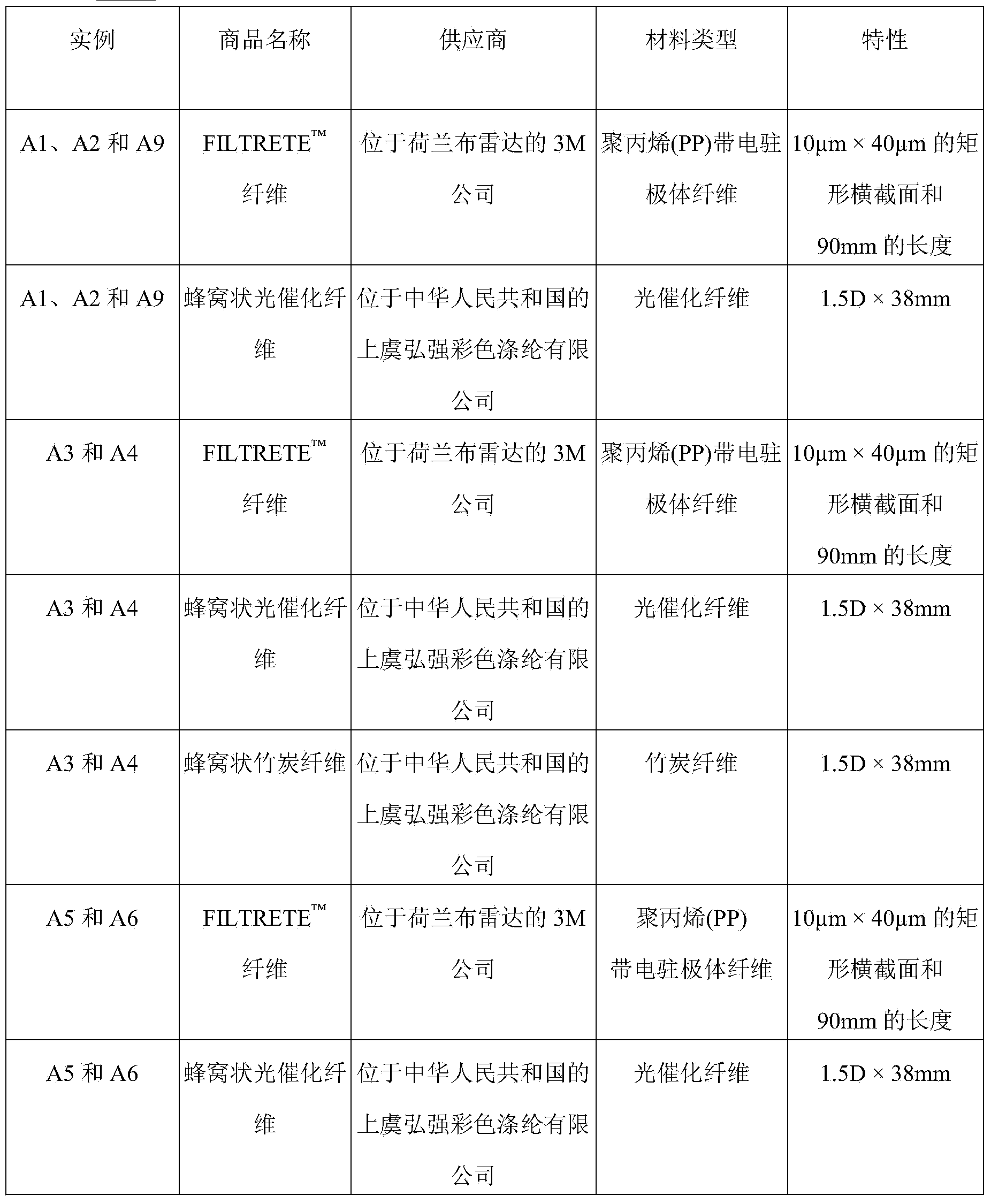Non-woven electret fibrous webs and methods of making same
A technology of electret and fiber net, applied in non-woven fabrics, textiles and papermaking, chemical instruments and methods, etc., can solve problems such as adverse effects, inability to effectively eliminate odors, and limited adsorption capacity
- Summary
- Abstract
- Description
- Claims
- Application Information
AI Technical Summary
Problems solved by technology
Method used
Image
Examples
example
[0252] Although the numerical ranges and parameters showing the broad scope of the present invention are approximate values, the numerical values listed in the specific embodiments are recorded as accurately as possible. However, any numerical value inherently contains certain errors, which are inevitably caused by the standard deviations existing in their respective test measurements. At a minimum, each numerical parameter is not intended to limit the application of the principle of equivalence in the scope of protection of the claims. At least, each numerical parameter should be interpreted according to the effective digits of the reported value and through the usual rounding method.
[0253] material
[0254] The raw materials used in the following preparation examples, examples and comparative examples are all commercially available, as described in detail in Table A below.
[0255] Table A
[0256]
[0257]
[0258]
[0259]
[0260] The following fibers are exemplary filler...
example A1
[0277] According to the processing procedure described below, a non-woven electret fiber web was prepared from 0.5 kg of electret fibers and 9.5 kg of photocatalytic fibers.
[0278] 1. First, the electret fiber and the photocatalytic fiber are uniformly mixed, and then coarse opening and fine opening are performed respectively, wherein each opening roll has a frequency of 50 Hz so that the fiber mass becomes a fine fiber bundle. In addition, the impurities in the raw materials are filtered out.
[0279] 2. Then, the fiber bundle is sent to the carding machine through the feed box to card the fiber bundle into a single fiber arrangement state. Next, the carded fibers were output through a doffing machine to form a substantially uniform non-woven electret fiber web with a basis weight of 10 gsm.
[0280] 3. When the non-woven electret fiber web is introduced into the cross-laid machine, the number of layers is controlled by the speed of the cross-laid machine and the conveyor belt to...
example A2
[0284] According to the processing procedure described below, a non-woven electret fiber web was prepared from 5 kg of electret fibers and 5 kg of photocatalytic fibers.
[0285] 1. First, the electret fiber and the photocatalytic fiber are uniformly mixed, and then coarse opening and fine opening are performed respectively, wherein each opening roll has a frequency of 50 Hz, so that the fiber block becomes a fine fiber bundle. In addition, the impurities in the raw materials are filtered out.
[0286] 2. Then, the fiber bundle is sent to the Rando air-laid machine through the feed box, and the fiber bundle becomes random by processing the fiber bundle with a licker roller under the action of air flow. Output a uniform non-woven electret fiber web with a basis weight of 90gsm.
[0287] 3. Next, the laminated non-woven electret fiber web is subjected to a needle punching method with a needle punching frequency of 350 times / min to increase the strength of the non-woven electret fiber ...
PUM
| Property | Measurement | Unit |
|---|---|---|
| length | aaaaa | aaaaa |
| length | aaaaa | aaaaa |
| length | aaaaa | aaaaa |
Abstract
Description
Claims
Application Information
 Login to View More
Login to View More - R&D
- Intellectual Property
- Life Sciences
- Materials
- Tech Scout
- Unparalleled Data Quality
- Higher Quality Content
- 60% Fewer Hallucinations
Browse by: Latest US Patents, China's latest patents, Technical Efficacy Thesaurus, Application Domain, Technology Topic, Popular Technical Reports.
© 2025 PatSnap. All rights reserved.Legal|Privacy policy|Modern Slavery Act Transparency Statement|Sitemap|About US| Contact US: help@patsnap.com



